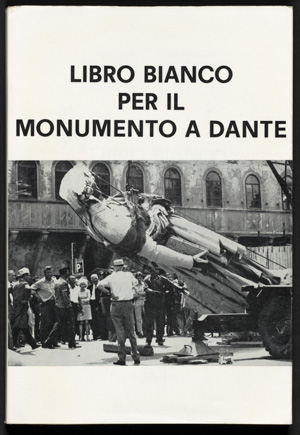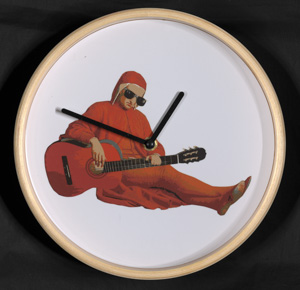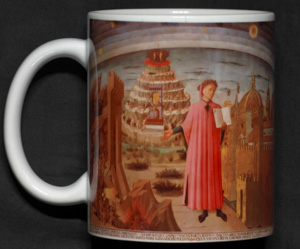The Fame of Dante in Italy and Worldwide
Mass Consumption, Mass Tourism, and the Commodification of Dante
Dante’s effect on tourism began long before the twentieth century. However, the massive scale and democratization of travel to Dante’s homeland in our own time has made it necessary to cater to the crowds and has brought the poet international celebrity status.
Guido Martina
Italian, 1906–1991
and Angelo Bioletto
Italian, 1906–1987
L’Inferno di Topolino (Mickey Mouse’s Inferno)
Milan, Mondadori, 1949
5.1 x 7.1 inches (13 x 18 cm)
Cornell University Library, Rare and Manuscript Collections
(1 image)
This serialized Dante adaptation made Mickey Mouse marketable to Italian parents. Martina used “high culture” in a funny, non-pedantic way, to make comics “educational in some sense.” (Francesco Stajano). Because all schoolchildren were required to study the Divine Comedy, Dante made Mickey look respectable to Italian parents who had mixed feelings about the “Americanization” of society after World War II.
International Committee for the Restoration of the Dante Alighieri Monument in the Piazza of Santa Croce in Florence
White Book for the Dante Monument
Florence, 1970
9 1/2 x 6 1/2 inches (24.13 x 16.51 cm)
Cornell University Library, Rare and Manuscript Collections
(1 image)
In 1962, the Tourism Office in Florence began to lobby the city to remove the statue of Dante which had been installed at the center of Piazza Santa Croce in 1865 with the support of the oldest and most prestigious Florentine families.
Proponents of the displacement of the statue wanted to use the piazza to organize calcio (football) games in traditional costume. Even though the disastrous flood of the Arno postponed the move, the statue was eventually relocated to the steps of the basilica on May 28, 1968.
This decision caused an uproar. The epigraph to this “white book” (a kind of official exposé prepared by independent experts), funded by three hundred citizens, cited Dante’s own outrage against the Florentines in Inferno canto 15, when he called them ”That ungrateful, and malignant people…”
Dante Wall Clock
Produced and sold by papistwhovian
Cornell University Library, Rare and Manuscript Collections
(1 image)
Coffee mug with reproduction of
Domenico di Michelino (Italian, 1417–1491)
Fresco of Dante on the north wall of Santa Maria del Fiore, Florence, 1456
Cornell University Library, Rare and Manuscript Collections
(2 images)
Paris has the Mona Lisa and the Eiffel Tower. Florence has Dante and the great dome of Florence Cathedral.



